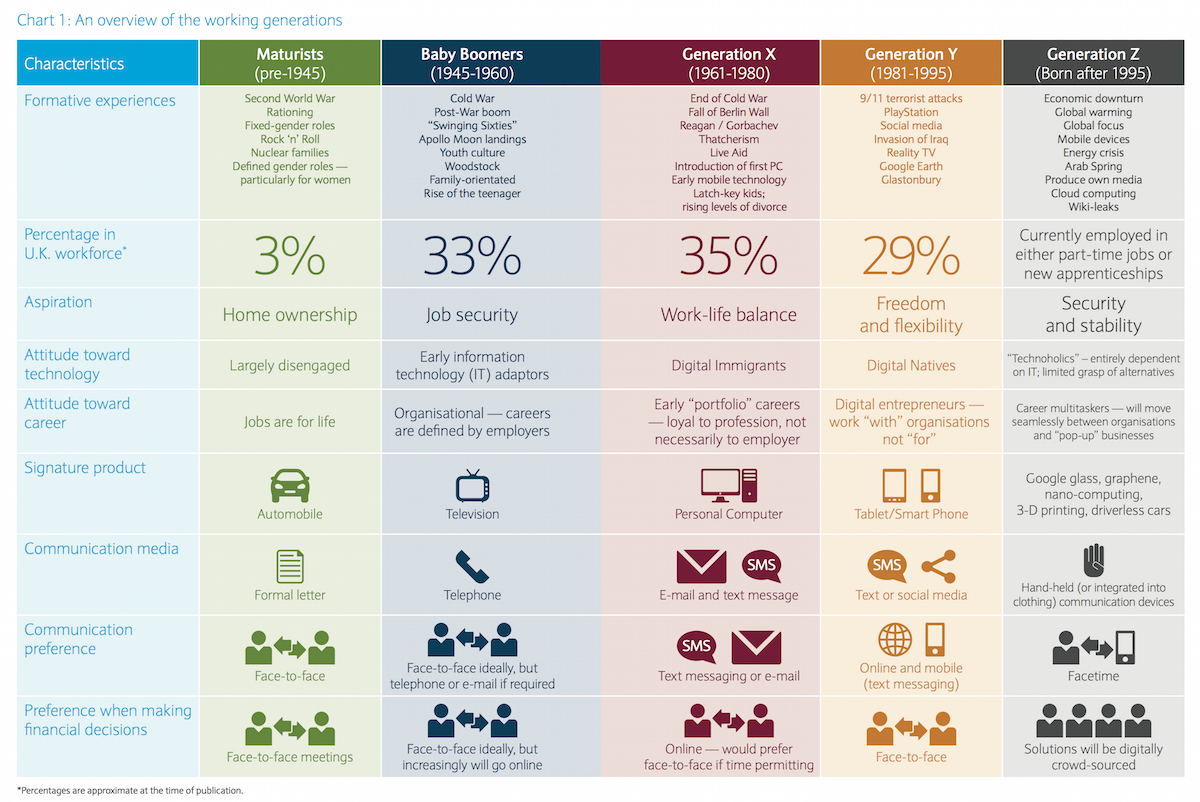
ACCORDING to an analysis by Bloomberg of United Nations data, millennials are about to be surpassed in number by Generation Z.
The report claims that by 2019, Generation Z will account for 32% of the global population at 7.7 million, slightly creeping ahead of millennials, who make up 31.5%.
What is Generation Z?
Generation Z accounts for all people born after the year 2001. The demographic is the first in human history to have been born completely within a digital environment, and are said to have little experience or want for alternative methods of communication.
The fact this group is taking over means good news for the digital environment: delivery services, gadget makers and the so-called gig economy. In contrast, it presents new challenges to event planners, luxury brands and physical media oulets.
Generation Z vs Millennials
The main difference between Generation Z and millennials (typically people born approximately between 1981 and 2000) is a differentiation between self-awareness and self-centeredness, according to “Rise of Gen Z: New Challenge for Retailers,” a report by Marcie Merriman, an executive director at Ernst & Young LLP.
According to the report, millennials are much more about what’s in it for them, looking for solutions from others, whereas Generation Z were more likely to find their own solutions to a problem.
The report further heralds Generation Z as the perfect younger sibling to its older, more selfish millennial counterpart by conveying the demographic as “self-aware,” “persistent,” “realist,” “innovative” and “self reliant,” with 89% saying they spend more time being “creative than just hanging out with friends,” and with an innate awareness of environmental issues. In comparison, millennials were described as “self-centered,” “entitled,” “idealist,” “creative” and “dependent.”
What about the Baby Boomers and Generation X?
While emphasis is being put on Generation Z and millennials thanks to their growing monopoly on future global business and affairs, there are currently four other living generation demographics contributing to the modern world:
- The Greatest Generation (1901 – 1924)
The generation who remembers the world without planes and cars, this generation grew up without the modern conveniences of fridges, washing machines and TV. They experienced World War II in adulthood, and are our great-grandmothers and great-grandfathers.
- The Silent Generation (1924 – 1945)
The era where children were “seen and not heard,” this generation grew up with the second world war and rationing, but came of age with post war optimism. The Frank Sinatra, jazz and swing generation of stay at home mums and men pledging loyalty to a lifetime job.
- The Baby Boomers (1946 – 1964)
Baby boomers remain the largest living adult generation. Thanks to World War II soldiers returning home from war, there was a significant spike in births in both America and Britain after 1946. These are the men and women who swung in the sixties and became hippies in the seventies.
The baby boomer generation is split in to two, with the Leading Edge Baby Boomers born between 1946 and 1955. The other half were born between 1956 and 1964 – the Late Boomers and were the generation who brought down the Berlin wall and disagreed with the cold war.
- Generation X (1965 – 1980)
Generation X helped coin the term “yuppies,” of the entrepreneurial renaissance. Most can remember a time without computers and tend to have a number of career changes.
Generation X are also often referred to as the MTV Generation. They experienced the emergence of music videos, new wave music, electronic, glam rock, heavy metal, punk, grunge and hip hop. It is the Nirvana, U2, Madonna, torn jeans, Friends, Beverly Hills 90210, PC generation.
The next demographic will be Generation Alpha, currently made up of toddlers, babies and the unborn. This generation, according to generational researcher Mark McCrindle, will be the “most formally educated generation ever, the most technology supplied generation ever, and globally the wealthiest generation ever.”
They’ll also be the longest living humans on earth so far.
Many baby boomers predict they will work past state pension age, says report

Enjoy the convenience of having The Sunday Post delivered as a digital ePaper straight to your smartphone, tablet or computer.
Subscribe for only £5.49 a month and enjoy all the benefits of the printed paper as a digital replica.
Subscribe